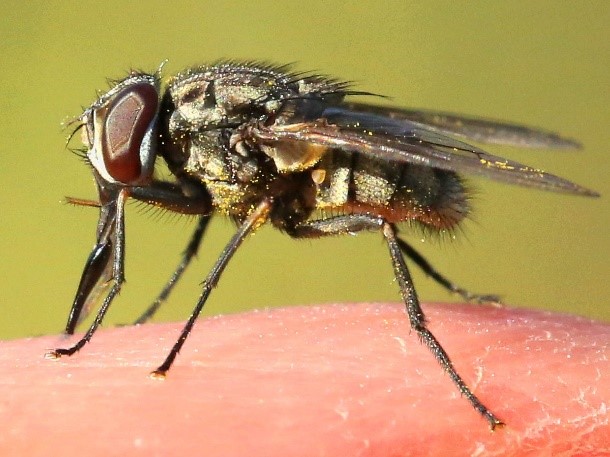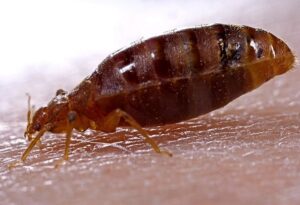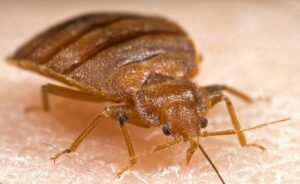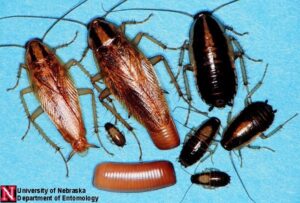Stable Fly:
General Description
|
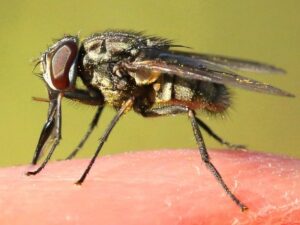
Credit: Peterwchen |
- The stable fly can easily be distinguished from the other common domestic flies by the long, pointed proboscis that extends in front of the head.
- The clear wings of the stable fly are iridescent, and the proboscis is slender, projecting in front of the
- The stable fly is so named because of its close association with domestic animals in stables. It is sometimes called the “biting house fly” because
- of its similar appearance to the common house fly, and “beach fly” because of their abundance in some beach areas.
Life Cycle and Common Characteristics
- Stable flies are commonly found around stables and houses, and also along the seashore, and near dog kennels. In these last two areas, they are frequently called biting beach flies and dog flies.
- Stable fly lays eggs in clusters of 20–100 on the ovipositional
- Ovipositional substrates include decaying vegetation, excluding dung unless it is comprised of or mixed with vegetation or dropped onto vegetation.
- The breeding medium must be moist, fermentation can improve larvae
- Examples of substrates in which the pest develops include decaying hay, alfalfa, silage, sugarcane, beached sea grass, lawn cuttings, compost, and piles of waste
- Cattle manure is sometimes utilized by stable flies for oviposition where high summer temperatures cause exposed manure to dry and develop a crust on the surface, sealing moisture within, thereby creating a relatively long-term, insulated
- Typically, a female lays eggs in 4–5 batches up to 20 times and can lay from 60–800 eggs during their Eggs hatch in 2–5 days at 26°C (in 12 hours at higher temperatures)
- Eggs are laid in such places as decaying hay, straw, fermenting weeds, grass, and seaweeds.
- Emergent larvae, or maggots, bury themselves in the oviposition substrate to feed and to prevent
- After 12–26 days, third instars enter the drier parts of their habitat and pupate in the last larval skin.
- Most pupae produce an adult in 5–26 days, and the adult is ready to fly in less than one
- Adult maximum longevity is variable, from 72 days for females to 94 days for males under laboratory conditions but longevity is likely less than 2 weeks under field
- Adults begin mating in 3–5 days and females start laying eggs in 5–8 days.
- The average adult lives about 20 days.
Damages and Medical Implications
- Stable flies are primarily a problem in suburban and rural areas, where horses and other livestock are kept.
- They have medical and veterinary importance
- They are obligate blood feeders and attack people, pets, and agricultural animals for a blood
- Both males and females use their proboscis to pierce the skin of a host and suck blood. The bite is painful, and outdoor human activity may be curtailed when these flies are numerous.
- They are synanthropic, meaning that they utilize habitats and food sources created by human activities such as animal
- Stable flies have the ability to transmit the pathogens that cause diseases such as anthrax, equine infectious anemia (EIA), and anaplasmosis to animals has been

